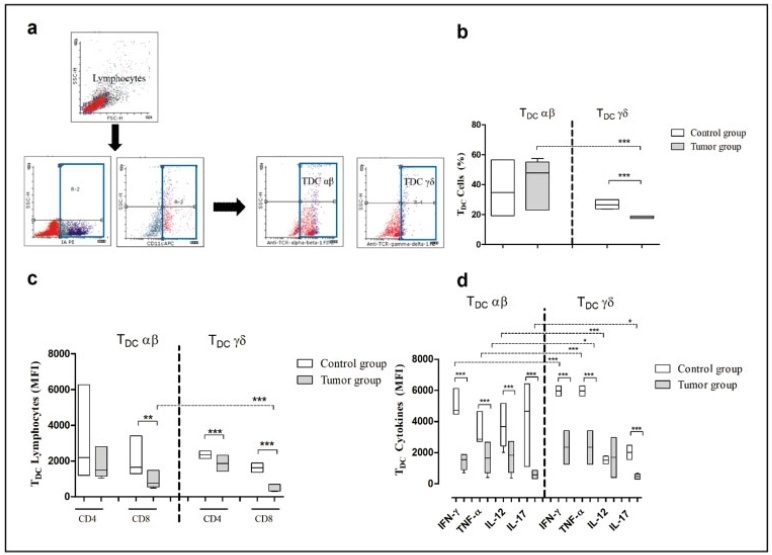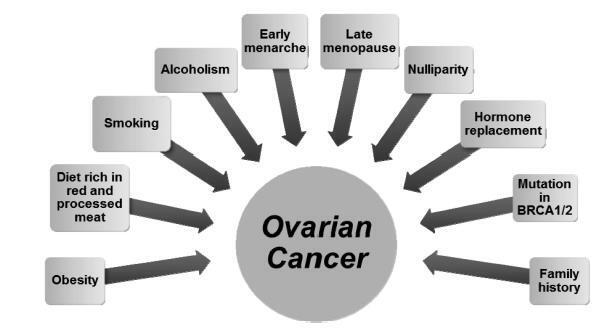You searched for:"Eddie Fernando Cândido Murta"
We found (18) results for your search.Summary
Revista Brasileira de Ginecologia e Obstetrícia. 2021;43(9):682-689
The aim of the present study was to compare the local and systemic expression of the factors linked to the interferon alpha (IFN-α) activation pathway in different degrees of cervical intraepithelial neoplasia (CIN) and cervical cancer.
A total of 128 patients with CIN I, CIN II, CIN III and cervical cancer was evaluated. The real-time polymerase chain reaction (RT-PCR) technique was used to evaluate the gene expression of IFNR1, IFNR2, IFN-α, oligoadenylate synthase (2’5′OAS), cytokine signal suppressor 1 (SOCS) 1, SOCS3, signal transducer and transcription activator 1 (STAT1), and IRF9 from 128 biopsies. A total of 46 out of 128 samples were evaluated by flow cytometry for IFNAR1, IFNAR2, STAT1, IRF7 and IFN-α in peripheral blood cells.
Patients with CIN II and III (63 samples) had a low local expression of IFNR1, but not IFNR2. Patients with some degree of injury showed high expression of SOCS1 and SOCS3. Systemically, patients with CIN II and III (20 samples) had a significant increase in IFNR1, IFNR2, STAT1, IRF7, and IFN-α in helper, cytotoxic T lymphocytes, and in monocytes.
Patients with high-grade lesions have increased systemic expression of IFN-α and its activation pathways in helper and cytotoxic T lymphocytes, as well as in monocytes due to an exacerbation of the immune response in these patients. This phenomenon is not accompanied by resolution of the lesion due to a defect in the IFN-α activation pathway that revealed by low local IFNAR1 expression and high local expression of SOCS1 and SOCS3.

Summary
Revista Brasileira de Ginecologia e Obstetrícia. 2021;43(5):368-373
To evaluate the antitumoral role of γδ TDC cells and αβ TDC cells in an experimental model of breast cancer.
Thirty female Balb/c mice were divided into 2 groups: control group (n=15) and induced-4T1 group (n=15), in which the mice received 2 x 105 4T1 mammary tumor cell line. Following the 28-day experimental period, immune cells were collected from the spleen and analyzed by flow cytometry for comparison of αβ TDC (TCRαβ+ CD11c+MHCII+) and γδ TDC (TCRγδ+CD11c+MHCII+) cells regarding surface markers (CD4+ and C8+) and cytokines (IFN-γ, TNF-α, IL-12 and IL-17).
A total of 26.53% of γδ TDC- control group (p<0.0001) - the proportion of αβ TDC was lower in splenic cells than γδ TDC; however, these 2 cell types were reduced in tumor conditions (p<0.0001), and the proportion of IFN-γ, TNF-α, IL-12 and IL-17 cytokines produced by γδ TDC was higher than those produced by αβ TDC, but it decreased under conditions of tumor-related immune system response (p<0.0001).
Healthy mice engrafted with malignant cells 4T1 breast tumor presented TDC with γδ TCR repertoire. These cells express cytotoxic molecules of lymphocytes T, producing anti-tumor proinflammatory cytokines.

Summary
Revista Brasileira de Ginecologia e Obstetrícia. 2017;39(12):676-685
Ovarian cancer is the leading cause of death among gynecologic tumors because in most of the cases (75%), the disease is diagnosed in advanced stages. Screening methods are not available since the disease is rare, and the tested methods, such as ultrasound and CA125, were not able to decrease the mortality rate for this type of cancer. This article discusses the main risk factors for ovarian cancer, and the potential clinical and surgical strategies for the prevention of this disease.

Summary
Revista Brasileira de Ginecologia e Obstetrícia. 2016;38(2):56-64
We studied the effects of loss of ovarian function (ovariectomy) onmuscle mass of gastrocnemius and themRNA levels of IGF-1, atrogin-1, MuRF-1, andmyostatin in an experimental model of rheumatoid arthritis in rats.
We randomly allocated 24 female Wistar rats (9 weeks, 195.3±17.4 grams) into four groups: control (CT-Sham; n = 6); rheumatoid arthritis (RA; n = 6); ovariectomy without rheumatoid arthritis (OV; n = 6); ovariectomy with rheumatoid arthritis (RAOV; n = 6). We performed the ovariectomy (OV and RAOV) or Sham (CTSham or RA) procedures at the same time, fifteen days before the rheumatoid arthritis induction. The RA and RAOV groups were immunized and then were injected with Met- BSA in the tibiotarsal joint. After 15 days of intra-articular injections the animals were euthanized. We evaluated the external manifestations of rheumatoid arthritis (perimeter joint) as well as animal weight, and food intake throughout the study. We also analyzed the cross-sectional areas (CSA) of gastrocnemius muscle fibers in 200 fibers (H&E method). In the gastrocnemius muscle, we analyzed mRNA expression by quantitative real time PCR followed by the Livak method (ΔΔCT).
The rheumatoid arthritis induced reduction in CSA of gastrocnemius muscle fibers. The RAOV group showed a lower CSA of gastrocnemius muscle fibers compared to RA and CT-Sham groups. Skeletal muscle IGF-1 mRNA increased in arthritics and ovariectomized rats. The increased IGF-1 mRNA was higher in OV groups than in the RA and RAOV groups. Antrogin-1 mRNA also increased in the gastrocnemius muscle of arthritic and ovariectomized rats. However, the increased atrogin-1 mRNA was higher in RAOV groups than in the RA and OV groups. Gastrocnemius muscle MuRF-1 mRNA increased in the OVand RAOVgroups, but not in the RA and Shamgroups. However, the RAOV group showed higher MuRF-1 mRNA than the OV group. The myostatin gene expression was similar in all groups.
Loss of ovarian function results in increased loss of skeletal musclerelated ubiquitin ligases atrogin-1 and MuRF-1 in arthritic rats.

Summary
Revista Brasileira de Ginecologia e Obstetrícia. 2016;38(1):41-46
To compare the diagnostic accuracy of the classic Meisels cytologic criteria and the Schneider secondary criteria relative to the hybrid capture method for diagnosing HPV infection.
This was a retrospective study performed at a public university hospital. A total of 41 patients with a cytologic diagnosis of HPV infection and 40 HPV-negative patients were selected for review of the cervical-vaginal smears seeking to classical and secondary criteria. A single pathologist reviewed the slides in search of the criteria. The classical and secondary cytologic criteria were compared with the hybrid capture for diagnosing HPV infection. Bartleti test was applied for the age analysis, and Fisher's exact test was used to compare proportions. The tests were considered significant when the probability of rejecting the null hypothesis was less than 5% (p < 0.05).
The Meisels criteria were less sensitive (34.0%) than the secondary Schneider criteria (57.5%) when compared with the hybrid capture (p < 0.0001), although the specificity of the former criteria was non-significantly higher (91.2% and 67.7%, respectively). In cases of moderate or intense inflammation, the sensitivity and specificity of the Schneider criteria were decreased, 33.3% and 50.0% respectively (p = 0.0115).
Compared with hybrid capture for diagnosis of HPV infection, the sensitivity of the secondary Schneider criteria was higher than the classical Meisels criteria.Moderate or intense inflammation reduces the sensitivity and specificity of the secondary Schneider criteria for diagnosing HPV infection using the hybrid capture as the gold standard.
Summary
Revista Brasileira de Ginecologia e Obstetrícia. 2009;31(8):377-379
Summary
Revista Brasileira de Ginecologia e Obstetrícia. 2007;29(10):548-548
Summary
Revista Brasileira de Ginecologia e Obstetrícia. 1998;20(1):33-35
DOI 10.1590/S0100-72031998000100006
We have analyzed 93 pregnant women with Papanicolaou smears suggesting human papillomavirus (HPV) infection (Schneider et al's criteria) with the purpose of studying the effect of maternal age, stage of pregnancy and number of pregnancies on the incidence of this infection. The control group consisted of 93pregnant women with Papanicolaou smears not suggestive of HPV infection. The results demonstrated that HPV infection is associated with pregnant women under 20 years of age, but no differences were found regarding stage and number of pregnancies.